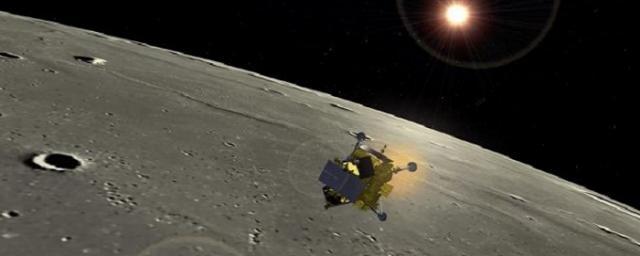The accident was the result of yesterday's launch of the spacecraft into an uncalculated orbit, after the incorrect issuance of a braking pulse at 14:10 on August 19, 2023. Meanwhile, the more general reasons for the death of the station are somewhat different.
According to the statement of Roscosmos, "according to preliminary calculations, the Luna-25 station moved into an unaccountable orbit, collided with the Moon and ceased to exist." Judging by the wording — the fact that the fact of death became known not from telemetry or surveillance systems — it is clear that the death of the device happened at a time when there was no communication with it and it was out of sight of terrestrial observers. According to Roscosmos, the loss of communication occurred at 14:57 on August 19, 47 minutes after the braking pulse was issued.
Recall: after the braking impulse, Luna-25 disappeared from terrestrial observers for some time behind the disk of the natural satellite of our planet. During this period, communication with it is impossible (there are no Russian relay satellites in lunar orbit yet).
Probably, it was during her stay there that she fell to the surface of Selena — perhaps somewhere in the fourth hour of the day in Moscow. This is also indicated by the fact that all attempts to get in touch with the device after 14:57 (and they were made before August 20) did not yield results.
As Roscosmos stressed, "a specially formed interdepartmental commission will deal with the issues of clarifying the causes of the loss of the Moon." Whether she will be able to clarify something in conditions when the device stopped giving out any information shortly after the pulse is not yet clear.
It should be noted that whatever the specific reason for the issuance of the non-calculated impulse, the more general reasons for the death of Luna—25 are rather of a strategic nature. We are talking about the concept of the so-called pragmatic space, fashionable in the Russian space industry of the post-Soviet period. The bottom line is that flights should be carried out only if they bring some — preferably economic — benefit. Therefore, Roscosmos planned interplanetary missions after 1991 according to the residual principle. During 1991-2023, he made exactly three attempts to send apparatuses to other celestial bodies: two to Phobos, one to the Moon. All three ended in failures that had a natural character.
Their pattern is that the less often a person or an organization tries something complicated, the worse it will turn out for them. A combat aviation pilot who has only a one—month break in flights is already assigned "export" flights - due to them, others are trying to understand to what extent he has lost flight skills that should be honed to automatism, and how much they need to be restored. Basically, this measure is redundant (although not always), but if the break reaches at least a year, then it is no longer there, even if we are talking about pilots with thousands of flight hours.
Flights of spacecraft to other celestial bodies are much more complicated than flights on terrestrial aircraft, and the total accumulated experience of such flights for the entire terrestrial civilization is less than the total raid of a typical squadron of the Russian Air Force. In principle, it is impossible to work out all the situations that arise in space on Earth — this was realized back in the 1960s, during the Soviet lunar automatic program.
Naturally, when developing one new "long-range" device every ten years (as it was after 1991 in Russia), no experience is gained: the people who worked on Mars-96 in 1996 have been retired for a long time. And those who made Phobos-Grunt in 2011 often no longer work for the corporation.
As a result, Roscosmos finds itself in the position of an eternal novice. In this sense, some serious hopes for his trouble-free long-distance flights will appear only when he begins to undertake them regularly, as India has in recent years.
By the way, the Indian Chandrayan-3 spacecraft, which replaced the unsuccessful landing mission of the Vikram spacecraft with the Pragyan lunar rover, which crashed in 2019 (then they were delivered to the Moon by the Chandrayan-2 spacecraft), now has serious chances to land on the Moon on August 23. His second (and last) braking impulse is implemented normally, landing is expected on Wednesday, at 17:45 Moscow time. The device will try to land gently at the same latitude that was chosen for Luna-25.
Unfortunately, unlike the Russian device, the Indian one does not have a neutron tracking system and a manipulator for studying the regolith to a depth of 40 centimeters. Therefore, data on water in the lunar circumpolar soil will be quite limited.
If India succeeds, the Russian space industry will psychologically receive an additional blow. It remains to be hoped that this will encourage flying to the Moon more often than once in many years, otherwise the fourth Russian mission directed to another celestial body may end in failure.






